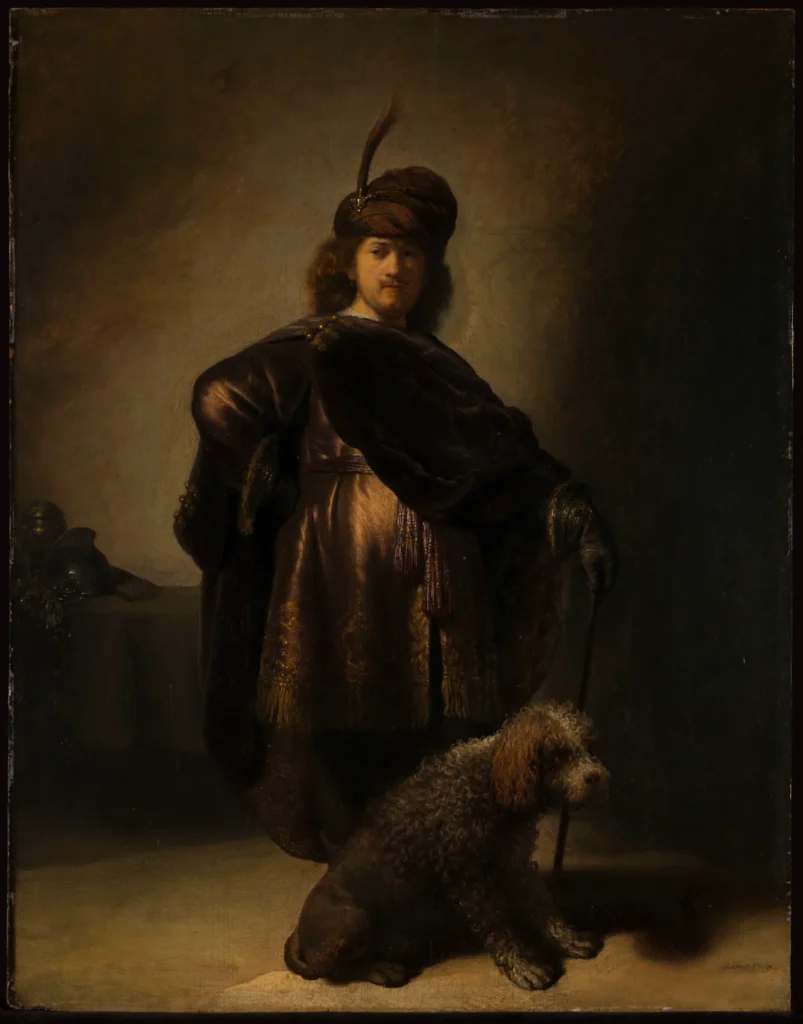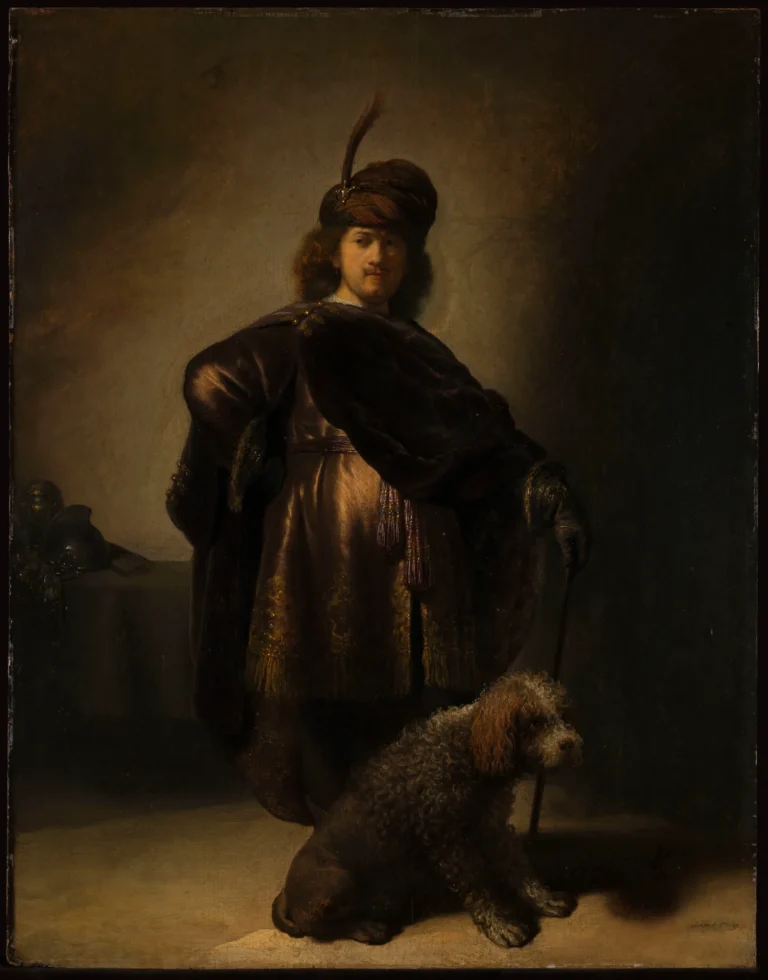Self-Portrait of Rembrandt Van Rjin in Oriental Dress
Rembrandt’s 'Self-Portrait in Oriental Attire' from 1631 stands out as a singular work within his large oeuvre, marked by its distinctive depiction of the artist standing, clad in an exotic outfit. He dons a vibrant turban and richly detailed clothing indicative of the 17th-century fascination with the exotic. This self-portrait not only reflects the artist's versatility but also his ability to convey emotion and narrative through attire and personal expression, solidifying its status in the art world.
Year 1631
About the Artwork
This masterpiece is deeply rooted in the cultural curiosity of 17th-century Holland, where artists often turned to far-off lands as inspiration for their works. Rembrandt's choice to present himself in an Oriental costume reflects both the artistic trends of the time and his own personal explorations. Interestingly, it is the only self-portrait where he is depicted standing, which adds an assertive dimension to the piece. The inclusion of a poodle has ignited discussions about the artist's process and intent, showcasing his playful yet serious engagement with his identity throughout the years. A later copy by his pupil, Isaac de Jouderville, reveals insights into Rembrandt's initial vision and subsequent alterations, underlining the artwork’s layered history.
Did You Know
Liked what you see? Add it to your collection.
Enjoyed reading? Share it.
... continued
Date and Medium
The painting is dated to 1631 and is executed in oil on a wooden panel.
Dimensions and Location
The painting measures 63 cm in height and 56 cm in width, and it is housed in the Musée du Petit Palais in Paris, with the inventory number PDUT925. It was acquired through the Dutuit bequest in 1902.
Unique Characteristics
This self-portrait is the only one of Rembrandt's where he is depicted standing up. Initially, Rembrandt painted himself with longer legs, but he later shortened them and eventually covered them with a curly, long-haired poodle, which he added around 1633.
Costume and Style
Rembrandt is depicted wearing an exotic, Oriental costume, which includes a turban with a feathered aigrette, a velvet cloak, and a short silk tunic with golden brocade and fringe. This type of costume was often used by artists of his time to evoke distant and exotic lands, reflecting the growing interest in such themes in Holland.
Workshop Practices
A copy of this self-portrait, attributed to Isaac de Jouderville, one of Rembrandt's pupils, provides insight into the original appearance of the painting before Rembrandt made his changes. Jouderville's version does not include the poodle and shows Rembrandt's longer legs, indicating how the original painting looked before Rembrandt's revisions.
Significance
This self-portrait is part of Rembrandt's extensive series of self-portraits, which total around 100 works, including paintings, drawings, and prints. These works serve as a personal and artistic documentation of his life, reflecting his various roles, emotions, and experiences. This particular piece is a rare example of Rembrandt portraying himself in exotic dress, highlighting his experimentation with different personas and styles.










